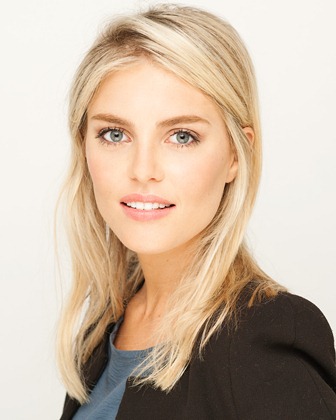Simone Ball.
On Sunday night, almost 100,000 Sydneysiders flocked to Centennial Park to enjoy Tropfest, the largest short-film festival in the world, renowned for showcasing and celebrating Australia’s emerging film talent. Emerging male talent, anyway.
This year’s films included stories of an Australian ex-boxer battling the bottle, unlikely Taylor Swift fans, identical twins, and a best friend with a dangerous secret. There were comedies, documentaries and animations. The films were diverse in story, but sadly not in gender.
For me – as an actor, a female, an advocate for equality and for the Australian film and television industry – it was this imbalance that stole the show.
Of the sixteen finalists, only one was female. As for female talent featured in the films, if you blinked you might have missed her.
As Simon Baker said as he presented the award for best female actor to Natalie Bassingthwaighte for her role in the film Would I Lie, “women were grossly under-represented in the acting department tonight.” And I don’t mean to detract from Nat Bass’s performance or her abilities, but she had zero competition for this award.
Tropfest founder John Polson told Inside Film last year that the number of female entrants and female finalists traditionally hovered around twenty percent, “marginally better than the industry standard, but still way too low."
But twenty percent of finalists weren’t female this year – not even ten percent were.
In fact, since 2010, there have only been 18 female finalists out of a total of 96 shortlisted films.
Sadly the issue of gender inequality isn’t exclusive to Tropfest. It’s an industry and society-wide problem.
The gender imbalance in the Australian film industry is significant. And according to Screen Australia, the imbalance is most notable in film. Of the feature films funded by Screen Australia in the past five years, twenty-three percent were written by women, thirty-two percent produced by women, and just fifteen percent directed by women. Of the best performing Australian films last year, only fourteen percent were directed by women.
This is not about a lack of female talent. There is a surplus of exceptional female actors, directors, writers and producers emerging (and emerged) in this country. And there are just as many women as men pursuing careers in Australia’s film industry. Statistics from the Australian Film Television and Radio School (AFTRS) show that forty-eight percent of graduates in screenwriting, producing and directing between 1973 and 2015 were women – yet only a small portion of these woman are getting their work on screen.
So where are all the stories by, for and about women?
Has someone forgotten that women make up over fifty-one percent of the Australian population? There is a whole market out there waiting to be capitalised upon. And our stories must reflect the diverse and important role that women play in our society.
Without true gender equality in film, we not only eliminate half our audience and half our stories, but we discourage female filmmakers entering the market. A market which is hard enough to break into even for men. And the less women there are, the more the imbalance grows. It’s a vicious cycle.
It is encouraging to know that Screen Australia is aware of the issues of gender imbalance and last year committed $5 million to a suite of initiatives to address the inequality within the Australian screen industry. And also that Polson himself is “disappointed” by the number of females represented in Tropfest, and welcomes conversation on how to “increase the number of women entering Tropfest, as well as women getting more equal opportunities in the industry as a whole”.
More needs to be done, and it needs to be done yesterday. Because it’s 2016, and I still find myself on a Sunday night watching men telling stories made by men. Tropfest is supposed to put a spotlight on the future screen talent of our nation – next year, I really hope it includes the other half of it.



